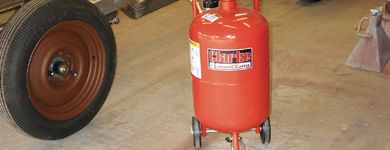
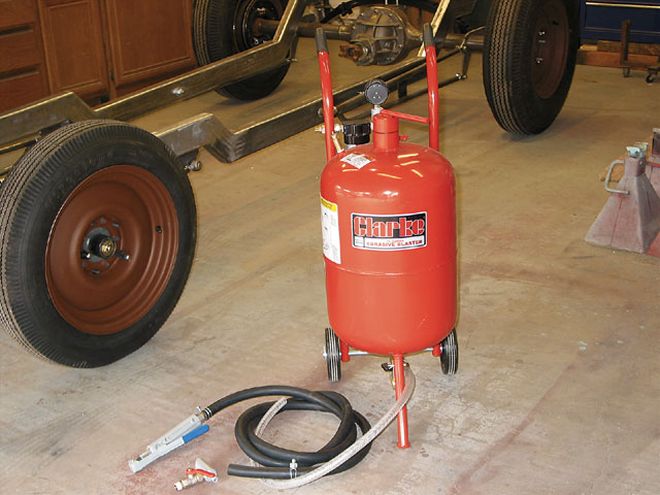 As always, eastwood offers the hobbyist the latest and best in equipment and supplies to help make that precious garage time easier and much more satisfying.
As always, eastwood offers the hobbyist the latest and best in equipment and supplies to help make that precious garage time easier and much more satisfying.
Stripping paint from any surface is a pain in the butt, to say the least. Over the years, I've spent way more time, energy, burned skin, and more than likely a few hundred thousand brain cells removing old layers of paint using chemical strippers. then, a dozen years or so ago, I finally graduated to sandblasting. that certainly beat the heck out of caustic chemical stripping, but sandblasting also had its drawbacks-chiefly the dangers of silicosis from breathing the airborne silica dust and the detrimental effect of workhardening sheetmetal and the aggressive abrasion on non-metallic parts. In these cases, my only options were to go back to the old chemical stripper route or farm out the job to a professional media-blasting outfit-a hassle, at best.
Recently I became aware that one of my favorite tool sources, the eastwood Company, had made a leap in technology that allowed the home (or professional, for that matter) shop dweller to take advantage of an optional stripping media (baking soda) that has the ability to remove paint without harming the substrate. With my curiosity piqued, I grabbed the phone and dialed up one of my tech sources for the lowdown.
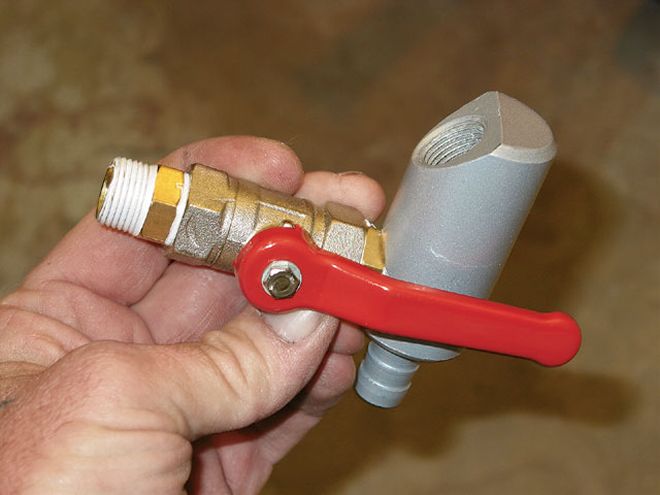 The heart of the conversion from sandblaster to soda blaster is the specialized abrasive outlet manifold supplied with the soda-blasting kit.
The heart of the conversion from sandblaster to soda blaster is the specialized abrasive outlet manifold supplied with the soda-blasting kit.
I got eastwood product development engineer Joe Richardson on the line, and he was more than happy to clue me in on this new development-and here's what he had to say. "abrasive blasting is an old and proven technology that uses silica sand as a blast media, hence the term 'sandblasting'; however, with the increased awareness of the dangers of silicosis since about 1973 or so, several modern alternative media have been in use.
"The most common alternate blasting media are aluminum oxide, silicon carbide, glass bead, coal slag, and aluminum or steel pellets, and more are generally used for paint and coating removal and in some cases, rust removal. all of these media are grains of hard, sharp material that, when propelled at high velocity with blasting equipment, are capable of generating a great deal of heat on the blasted surface, resulting in warped panels and etched surfaces. traditional abrasive blasting is still best for stripping and removing rust from castings or heavy steel parts, but not the best for stripping paint from autobody sheetmetal and certainly not fiberglass.
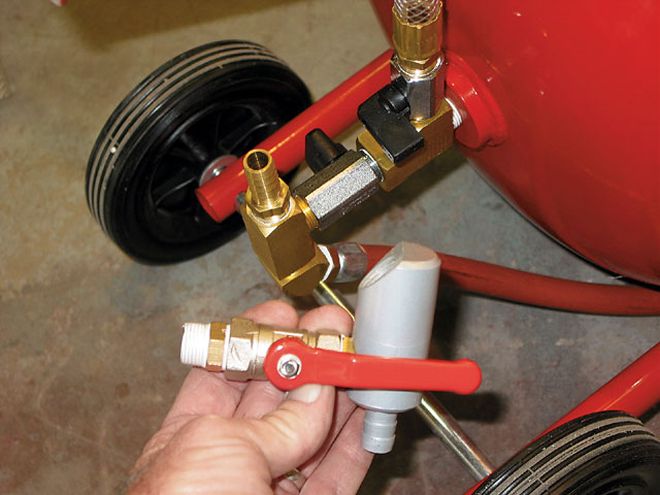 The conversion is a piece of cake and allows one to enjoy the benefits of soda blasting while maintaining the ability to quickly convert the unit back to a traditional sandblasting unit for rust and scale removal.
The conversion is a piece of cake and allows one to enjoy the benefits of soda blasting while maintaining the ability to quickly convert the unit back to a traditional sandblasting unit for rust and scale removal.
"There are some less aggressive media, including poly, walnut shell, corn husk, and others available for the purpose of stripping paint from autobodies; however, they can require a great deal of work to clean up from the area when the job is done and will leave residual particles in seams and crevices of the car body. there is another alternative rapidly increasing in popularity in the form of bicarbonate of soda, more commonly known as 'soda blasting.' the technology is fairly recent, having been developed in the mid-'80s primarily for the purpose of cleaning the statue of liberty inside and out-a delicate task requiring effectiveness without damage.
"Fast forward some 20 years and we now have the benefit of equipment easily obtainable to the average hobbyist who wishes to strip paint from his pride and joy without inflicting damage. In fact, a car can be stripped of its paint while leaving all trim, rubber, and glass in place with no harm to those components! additionally, no paneldamaging heat is generated, and the surface is left smooth and texture-free, even on aluminum and fiberglass. this occurs because the soda particles completely shatter into a dust after striking and removing the paint without harming the base metal or fiberglass. We recently stripped the paint on a vintage car using a soda blaster and discovered original factory sanding marks on the fender-they were actually left intact but the paint was gone!
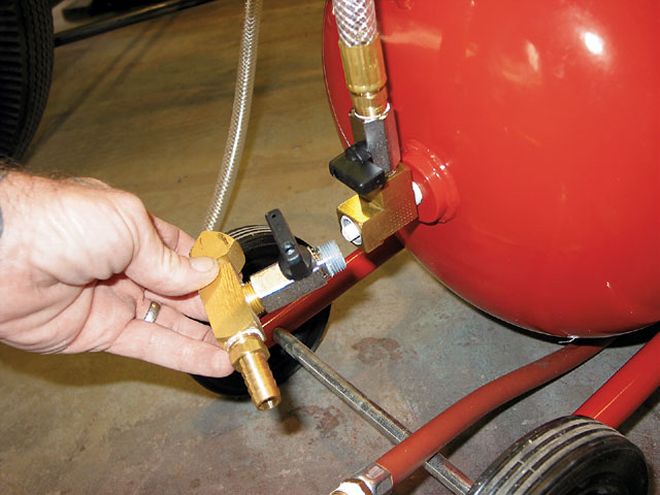 The conversion process takes just a few minutes and is started by removing the standard manifold from the unit.
The conversion process takes just a few minutes and is started by removing the standard manifold from the unit.
"The soda will also leave a light, dusty protective film on panels, helping to prevent surface rust for up to several months. this is simply rinsed away with water prior to painting, and you only need to rinse out seams and crevices to remove stray dust particles. Perhaps the best feature of soda is the fact that it is completely inert and water soluble, saving a great deal of cleanup time when the job is done. Of course, the proper steps should be taken to recover removed paint particles before getting out the hose and washing away the dust.
"One additional use of soda as a blasting media is the ability to clean and degrease complex mechanical assemblies, such as transmissions or rear axles, with no harm to internal moving parts. Many folks also use it to clean underhood areas with no removal of or harm to components or wiring."
With this newfound bit of information, and a perfect candidate for a paintstripping job waiting patiently in my garage, I had Joe ship me one of eastwood's new pressure blasters and soda conversion kits to see just how well it worked.
As is always the case with a new piece of eastwood equipment, I was pleased with just how well it worked. so, with this in mind, I chronicled my saturday afternoon paint-stripping job so I could share my experience. take a look and see for yourself how another eastwood product is making my home shop chores easier, less dangerous, and far less expensive than farming it out to a professional shop.